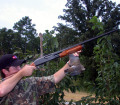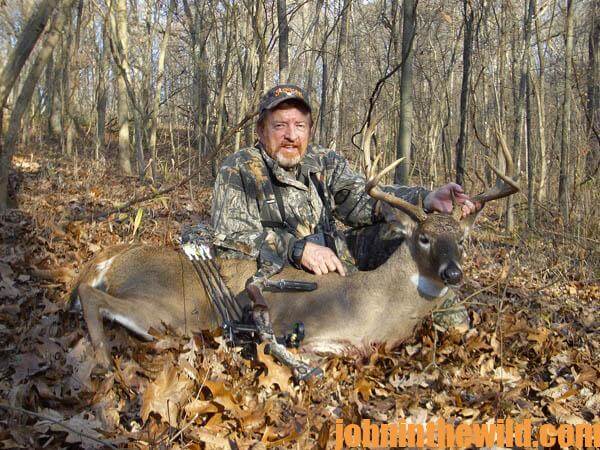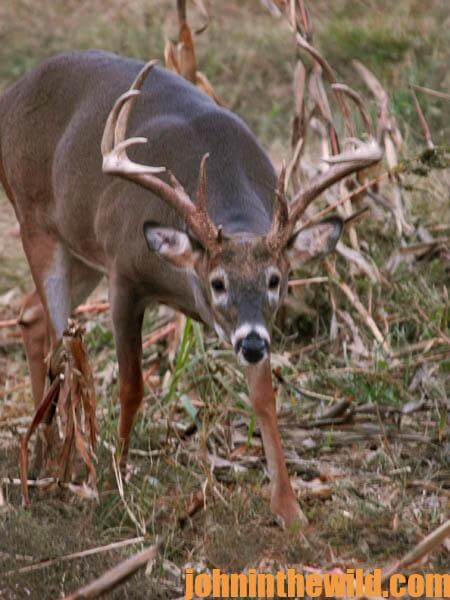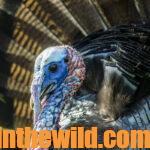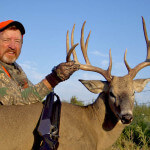John’s Note: David Hale, co-founder of Knight and Hale Game Calls in Cadiz, Kentucky, also co-produces the “Ultimate Hunting” TV show. Each year he travels the country doing TV shows and videos for Commonwealth Productions. When Hale and his partner Harold Knight go hunting, they have to produce animals for TV and video, and they use motion-sensor cameras to accomplish this task. As Hale explains, “We’ve been using motion-sensor cameras ever since they first came to the market.”
Trail cameras also help David Hale to hunt 8-point bucks, his favorite bucks to hunt. 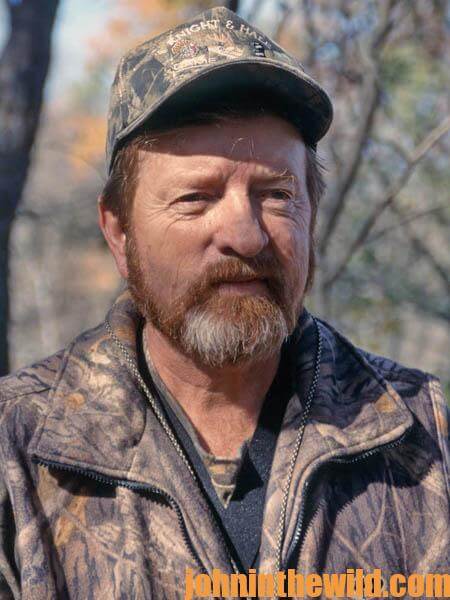
Hale explains, “I think God made 8-point bucks, and man has tried to jazz their antlers up to become 10, 12- or 50-point bucks. You have to remember that an 8-point buck is the norm. A buck that has more antlers than 8 points is an oddity of nature. I believe that there is no more-magnificent deer than an 8-point buck that will score 150 or better on the B&C. When I find a deer like this, that deer has my undivided attention, until I can take him.
“One year I found an 8-point buck using trail cameras when the buck was coming to a food source. I used my cameras to determine where he lived and traveled and where he was feeding. But even with all that information, I had to put in 2 weeks of tree-stand time to finally identify a small neck of woods that buck was traveling through and take him with my bow. This buck was nocturnal and mainly came to the food source at night. He never showed-up during the daytime. And, if I hadn’t had the trail cameras set-up to photograph at night, I never would have known this buck was even on the property. The cameras began to take pictures of him moving more frequently during daylight hours, 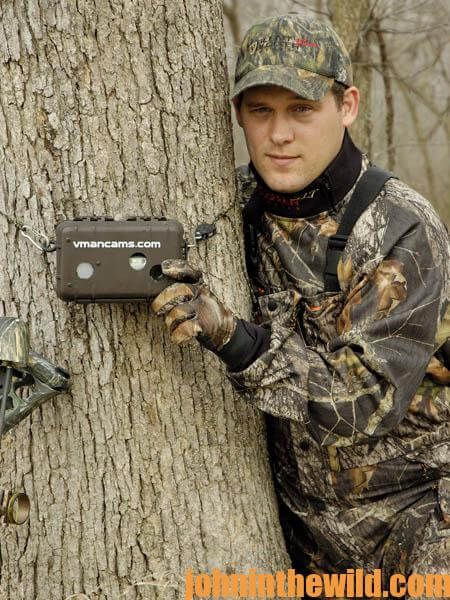 just prior to the rut. Finally, I had the cameras set-up in a bottleneck and noticed the buck coming through that bottleneck late in the afternoon when there was still enough light to get a shot off with my bow. And, that’s how I finally took this 8-point that scored 152 Boone & Crockett. That old buck probably would have died of old age without my ever seeing him, if I hadn’t been using my motion-sensor cameras.”
just prior to the rut. Finally, I had the cameras set-up in a bottleneck and noticed the buck coming through that bottleneck late in the afternoon when there was still enough light to get a shot off with my bow. And, that’s how I finally took this 8-point that scored 152 Boone & Crockett. That old buck probably would have died of old age without my ever seeing him, if I hadn’t been using my motion-sensor cameras.”
Hale considers motion-sensor cameras extremely helpful for locating nocturnal bucks, especially around a feeder. According to Hale, bucks often will come to feeders at night to feed and to find estrous does. Hale says that if you can use feeders, you may want to set them up to go off at night, “Because then you can get bucks to come to the feeders that won’t come there during daylight hours. Another advantage of having the feeder go off at night is that you won’t have turkeys, songbirds and other critters coming in and eating-up your feed like they do during the daytime.”
Hale sets-up his feeders with plenty of food, so the does will have enough food available to feed on for a long time. He reports, “I usually set-up my feeders to go off at 6:00 pm, because by that time the turkeys already have flown-up to their roosts. When the does come out to feed, they’ll stay around the feeder till after dark, which is the time those big bucks will come out, and I can photograph them with my cameras. If you set your camera up so that it only goes off once every 2 minutes when there is movement in front of it, you’ll have a lot of deer moving in and out of the areas that the camera is photographing. I guess more than anything else, the camera tells me how-many animals I’ve got on the property that I hunt.”
To learn more about hunting deer, get John E. Phillips’ new eBooks “How to Hunt Deer like a Pro,” “PhD Whitetails,” and “Deer and Fixings.” Click here to get these books.
About the Author
John Phillips, winner of the 2012 Homer Circle Fishing Award for outstanding fishing writer by the American Sportfishing Association (AMA) and the Professional Outdoor Media Association (POMA), the 2008 Crossbow Communicator of the year and the 2007 Legendary Communicator chosen for induction into the National Fresh Water Hall of Fame, is a freelance writer (over 6,000 magazine articles for about 100 magazines and several thousand newspaper columns published), magazine editor, photographer for print media as well as industry catalogues (over 25,000 photos published), lecturer, outdoor consultant, marketing consultant, book author and daily internet content provider with an overview of the outdoors. Click here for more information and a list of all the books available from John E. Phillips.

